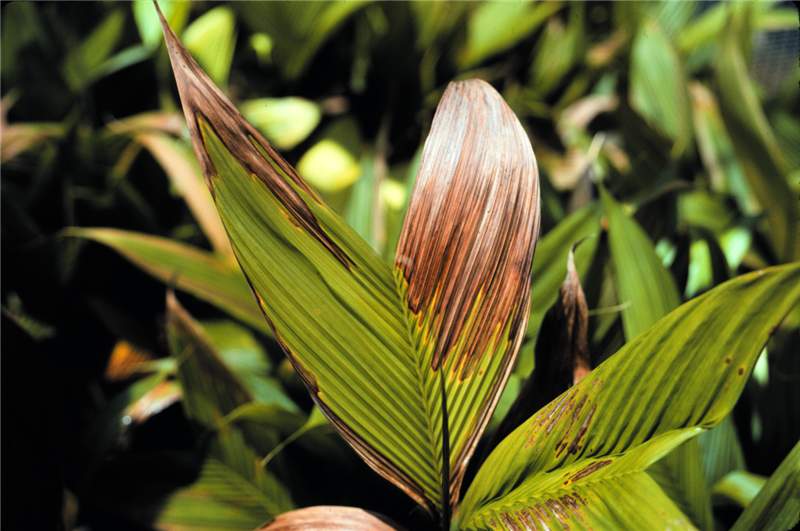Water Stress
|
Figure 1. Leaf tip necrosis caused by water stress in Geonoma sp. Photo by T.K. Broschat.
|
|
Figure 2. Collapsed and twisted trunk of water-stressed Roystonea regia. Photo by T.K. Broschat.
|
Symptoms
Typical water stress symptoms include reduced growth and necrosisnecrosis:
dead tissue, usually desiccated and brown to gray in color
of leafletleaflet:
divisions of pinnate leaves
tips, spreading to the entire leaf as severity increases (Fig. 1). Oldest leaves are usually the first to show symptoms, but eventually newly emerging leaves may also wither and die. Death of the meristemmeristem:
the growing region of a plant, a special area of undifferentiated cells wherein new cells and organs are developed
may follow. Water stress in some species is indicated by leaflets folding about the midribmidrib:
see rachis
or wilting. In mature palms, shriveling or collapse of the trunk may also occur (Fig. 2).
May be confused with
Boron or other chemical toxicities, high soil soluble salts, and potassium deficiency can cause similar symptoms. Leaf, and/or soil analysis may help eliminate these other possibilities.
Cause
Water stress occurs when water is limiting or the root system is incapable of taking up sufficient water.
Occurrence
Water stress is fairly common in container-grown palms but is less common in landscape or field situations due to the more extensive root systems of the latter. Wilting caused by water stress may be apparent on palms growing in wet soils due to root rot diseases, poor soil aeration, or vascular wilt diseases. Palm species native to dry climates are usually more drought tolerant than those from tropical rain forests that lack a distinct dry season. Palms in general are fairly tolerant of drought once established in the landscape.




